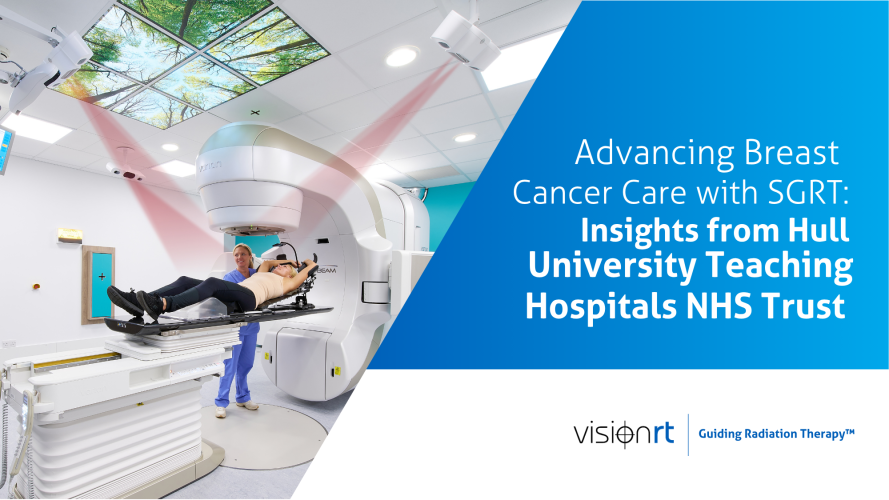Advancing Breast Cancer Care with SGRT: Insights from Hull

As part of our Breast Cancer Awareness Month series, we spoke with colleagues from Hull University Teaching Hospitals NHS Trust about their journey implementing Surface Guided Radiation Therapy (SGRT) using AlignRT. Their experience highlights how SGRT can drive efficiency, accuracy, and patient-centered improvements in breast cancer treatments and beyond.
Why Did Hull Transition to SGRT?
Traditionally, patients receiving radiation therapy needed small permanent tattoos to guide their treatment setup. For many, these tattoos were an unwanted reminder of their cancer journey. For Nicola Mullins, Consultant Physicist, the motivation to implement SGRT was clear:
“The goal was always to use the technology to the fullest”, Nicola explains. “Our initial focus was on breast cancer patients, where we aimed to improve efficiency, ensure reproducibility of setup, and reduce treatment imaging – importantly, the goal was to move towards a tattooless pathway for all our patients.”
How SGRT Made Tattoo-Free Workflows Possible
Tattoo-free treatments have been a major patient-facing change. Richard Key, Radiotherapy Team Leader, explained, “One or two patients were already aware they wouldn’t need tattoos anymore. Word’s getting out there”. A patient survey conducted by the team confirmed the positive experiences patients had with tattoo-free treatments.
AlignRT uses 3D camera technology to track a patient’s surface in real-time, enabling precise alignment. Clinical evidence has shown AlignRT to be as accurate as marks or tattoos for positioning patients in preparation for their treatment123.
Within a year, the department transitioned to tattoo-free workflows for nearly all sites. “The technology is being utilised on all the machines for the majority of patients. I think it’s an incredible journey,” says Nicola.
“With SGRT, we no longer need tattoos. The technology gives us accuracy and reproducibility, while also improving efficiency for both staff and patients,” explains Nicola.
What Are the Workflow Benefits of Using AlignRT?
From the therapeutic radiographer’s perspective, SGRT has streamlined setups. Richard explained: “The speed has increased because we’ve got a wealth of information now that we didn’t have before. With the real-time delta information and the Postural Video module, setup accuracy and speed have improved, while reducing manual manipulation of patients”.
This reduction in manual handling has tangible benefits for staff as well as patients. “There’s a lot less movement now, which makes treatments smoother for patients and easier to manage for radiographers,” Richard recalls.
Victoria Stanley, Macmillan Advanced Practitioner, noted the impact on dose: “We’ve significantly reduced the amount of imaging, including KV imaging, which lowers patient dose. At the same time, we’re saving appointment time by cutting down on repeat setups. This not only makes treatments faster but also more comfortable and safer for our patients, which is really important.”
What Makes a Successful SGRT Implementation?
The Hull team credits their success to structured training and department-wide buy-in. “Vision RT did a lot of support in super user training. We developed protocols, rolled out training, and ensured communication was consistent across the department,” Nicola said.
Hull University Teaching Hospitals’ experience demonstrates how AlignRT and SGRT technology can transform breast cancer care, combining precision, efficiency, and patient comfort. As Hull continues to expand its use of SGRT, the future of patient-centred radiation therapy looks brighter than ever.
Get in touch
Ready to take the next step?
Vision RT’s family of SGRT solutions guide radiation therapy for better patient care at every step: Sim, Planning, Treatment and Dose. Whether you’re looking for a quote, a product demo (virtual or in-person) or just more information, please get in touch.